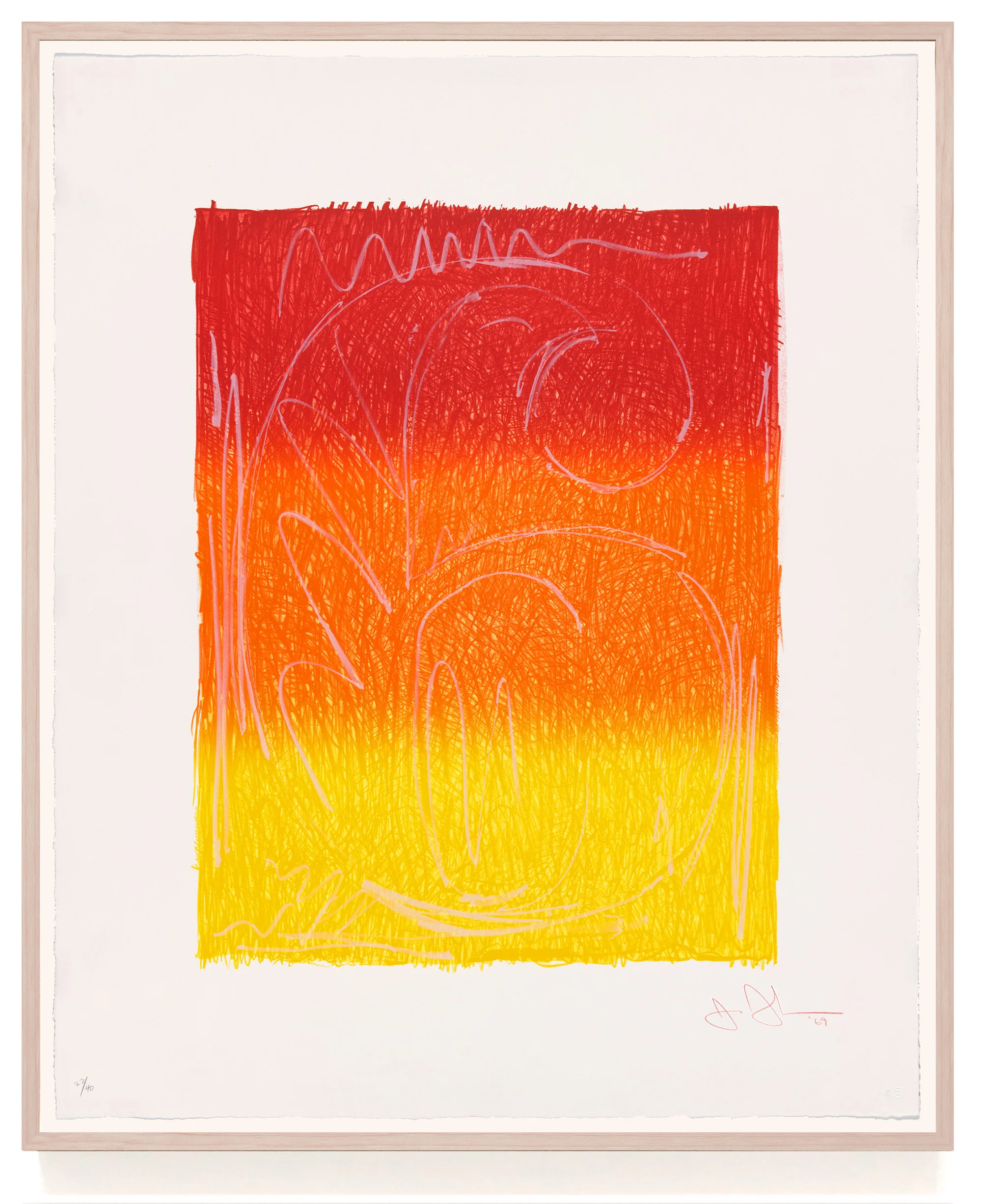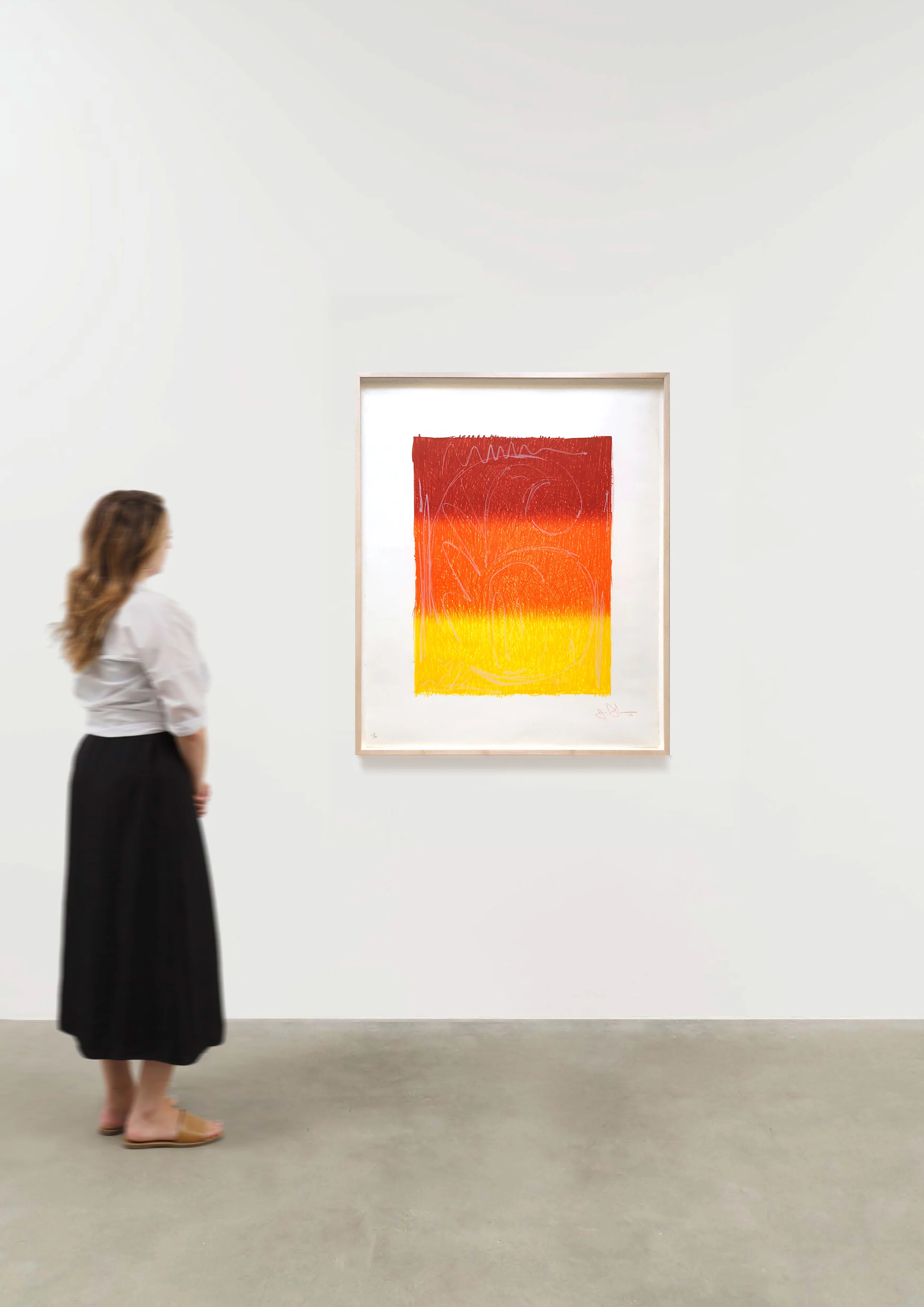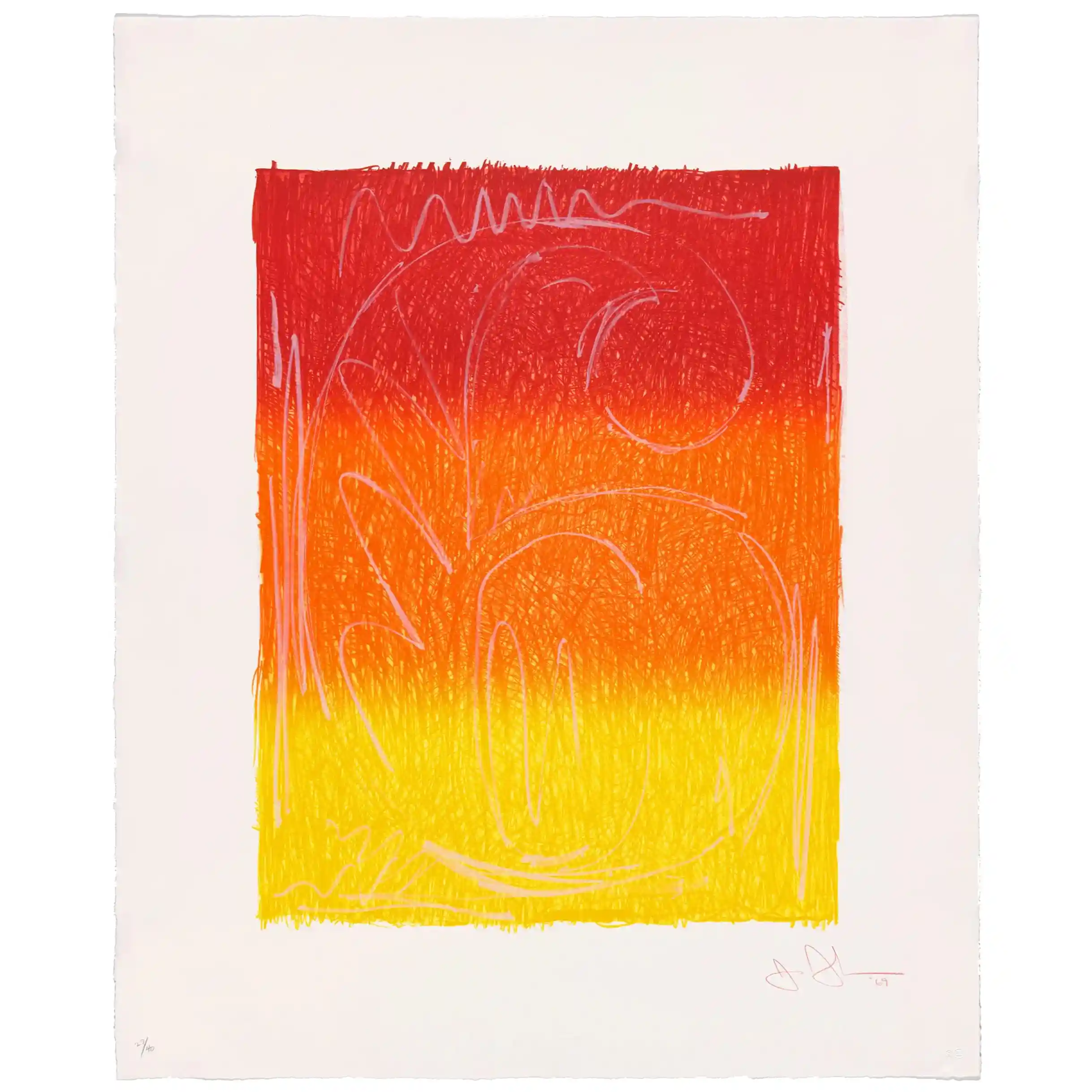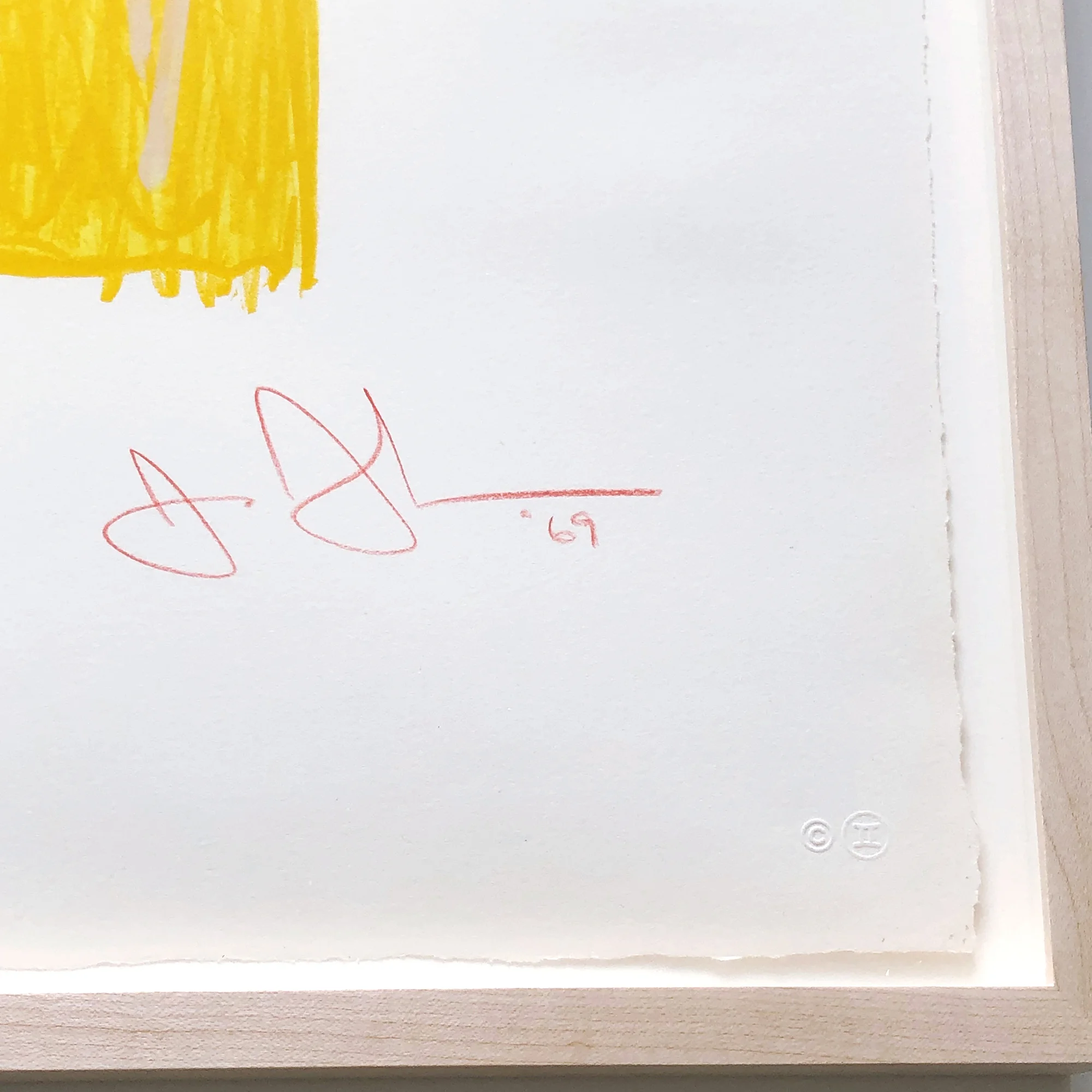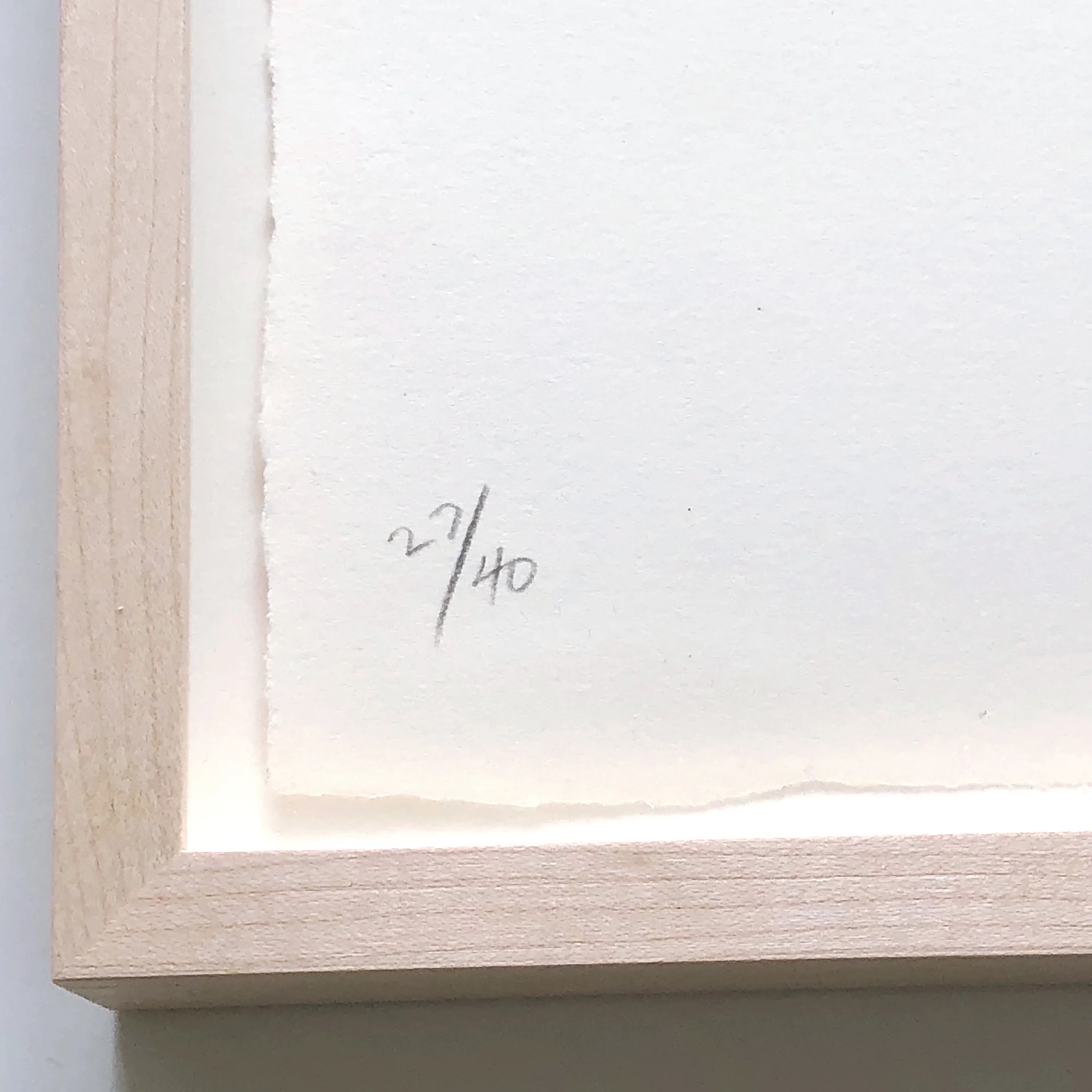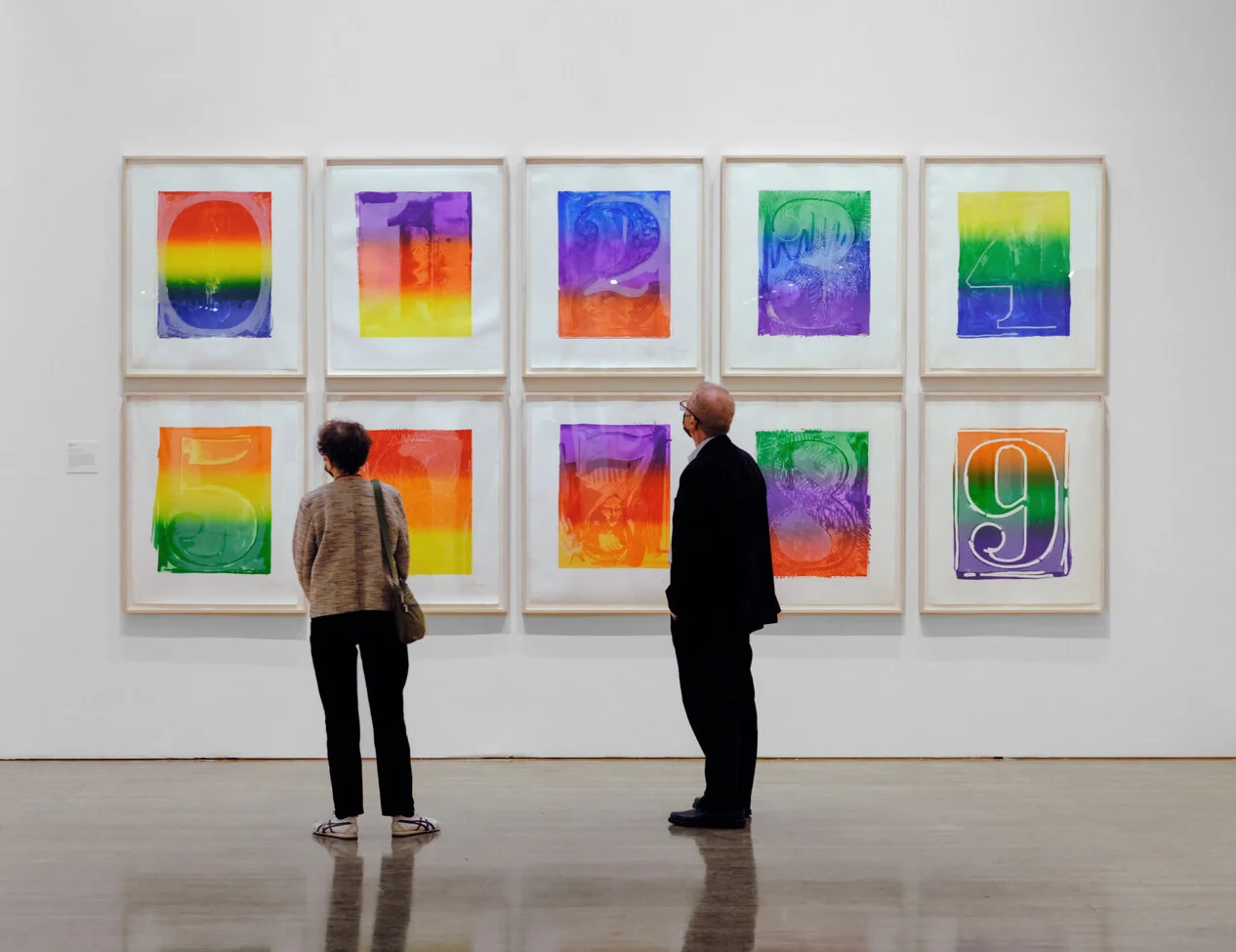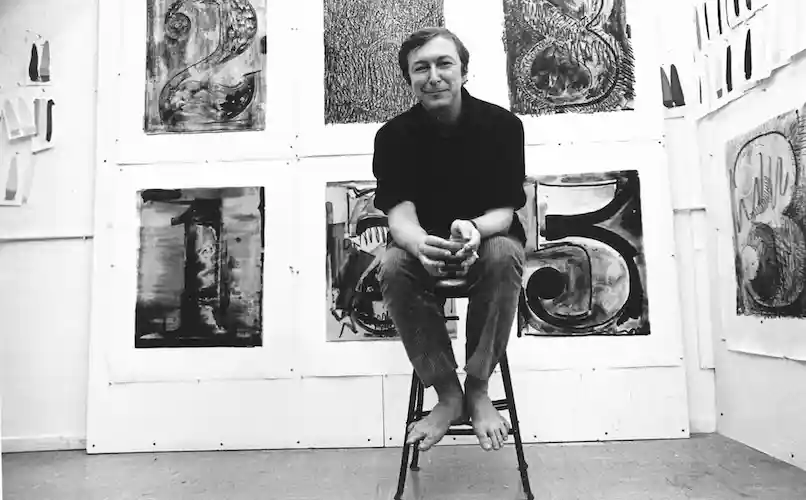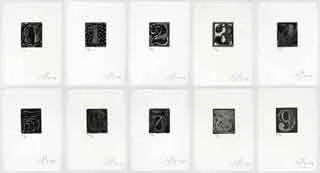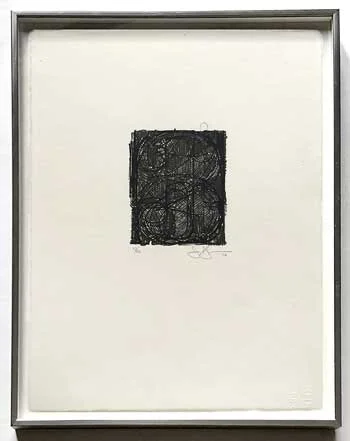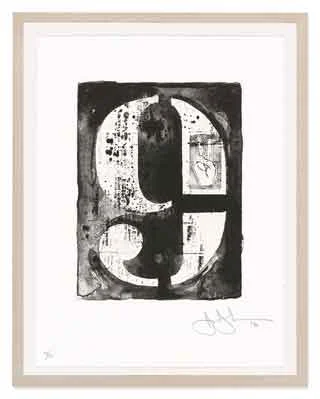Figure 6 (ULAE 65), 1969
image: 27 ½ x 21 ¼ inches
paper: 38 x 31 inches
frame: 42 x 35 inches
edition: 40 with 12 AP's & 1 PP
signed & dated in red pencil lower right
numbered in pencil lower left
published by Gemini G.E.L., Los Angeles, with their blindstamps and inkstamp on the reverse
© 2024 Jasper Johns / Licensed by VAGA at Artists Rights Society (ARS), NY
Literature
Michael Crichton, Jasper Johns, Harry N.Abrams, Inc./The Whitney Museum of Art, New York, 1977, plate 139, n.p., another impression reproduced.
Carlo Huber, Jasper Johns: Graphik, Verlag Klipstein und Kornfeld, Bern, 1970, plate 110, n.p., another impression reproduced in color.
Shigeo Chiba, Jasper Johns Prints Exhibition 1960–1989, Tokyo, 1990, Japan Art and Culture Association/Kokusai Geijutsu Bunka Shinkokai, n.p., plate 8, another impression reproduced.
Michel Butor, Kathleen Slavin, Jasper Johns Gravures Dessins 1960-1991, Foundation Vincent Van Gogh, 1992, no. 7, pg. 52, another impression reproduced in color.
Richard Field, The Prints of Jasper Johns 1960-1993: A Catalogue Raisonne, ULAE, New York, 1994, Catalogue Reference ULAE 65, n.p., another impression reproduced full-page color.
Susan Lorence, Technique and Collaboration in the Prints of Jasper Johns, Castelli Gallery, New York, 1996, Catalogue Reference 12g, n.p., another impression reproduced in black and white
Roberta Bernstein, Carter E. Foster, Jasper Johns Numbers, Cleveland Museum of Art, 2003, pg. 79, another impression reproduced in color.
Carlos Basualdo, Scott Rothkopf, Jasper Johns Mind/Mirror, Whitney Museum of American Art, 2021, another impression reproduced plate 46, pg. 86.
Exhibited
Kunsthalle, Bern, Die Grafik Jasper Johns, April 17-May 29, 1971, another impression exhibited.
Whitney Museum of America Art, New York, Jasper Johns, October 18, 1977-January 22, 1978, another impression exhibited.
Museum Ludwig, Cologne, Jasper Johns, February 10-March 26, 1978, another impression exhibited.
Centre Georges Pompidou, Paris, Jasper Johns, April 18-June 4, 1978, another impression exhibited.
Hayward Gallery, London, Jasper Johns, June 21-July 30, 1978, another impression exhibited.
Seibu Museum of Art, Tokyo, Jasper Johns, August 19-September 26, 1978, another impression exhibited.
San Francisco Museum of Modern Art, San Franscisco, Jasper Johns, October 20-December 10, 1978, another impression exhibited.
The Museum of Modern Art, New York, Jasper Johns: A Print Retrospective, May 19–Aug 19, 1986, another impression exhibited.
The Seibu Museum of Art, Tokyo, Prints Exhibition 1960–1989, Traveled to The Seibu Department Store, Isetan Museum of Art, Tokyo, April 26th—May 15th, 1990, Isetan Department Store, Niigata, June 7-19, 1990, Isetan Department Store, Urawa, July 18-24, 1990, Isetan Department Store, Matsudo, August 9—August 14, 1990, Isetan Department Store, Shizuoka, August 23—August 28, 1990, another impression exhibited.
Foundation Vincent Van Gogh, Arles, Jasper Johns Prints and Drawings from the Castelli collection, July 4-September 30, 1992, another impression exhibited.
Whitney Museum of American Art, New York, Jasper Johns Mind/Mirror, September 29, 2021-February 13, 2022, other impressions exhibited.
Selected Museum Collections
The National Gallery of Art, Washington D.C.
The Museum of Modern Art, New York
Walker Art Center, Minneapolis
National Gallery of Art, Australia
San Francisco Museum of Modern Art, San Franscisco
The Metropolitan Museum of Art, New York
Harvard University Art Museums, Cambridge
Additional Photos
Since the mid-1950's, Jasper Johns has reworked key motifs—flags, targets, maps, the alphabet and numbers. Johns depicts subjects that "the mind already knows" but overlooks due to constant exposure. Color Numeral 6 elevates the number, its form derived from a commercial stencil, to a striking, orange-yellow hued portrait. Johns used an abbreviated grid of ten rectangular units for the first versions of a motif called variously “0-9," Ten Numbers or "Numerals." The concentration on a single 0 to 9 sequence creates a closed system like the "Numbers," while allowing more attention to the comparative shapes of individual numerals.
